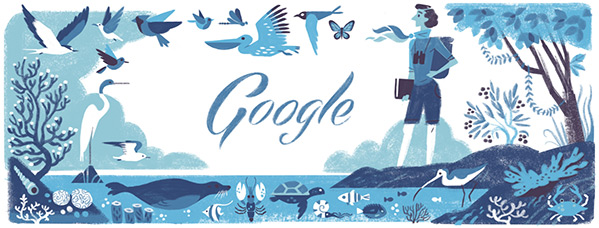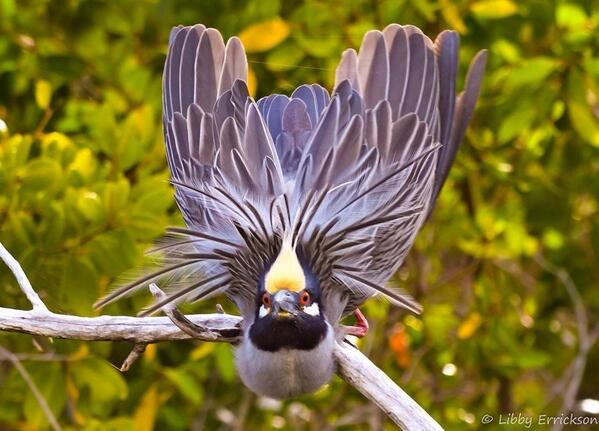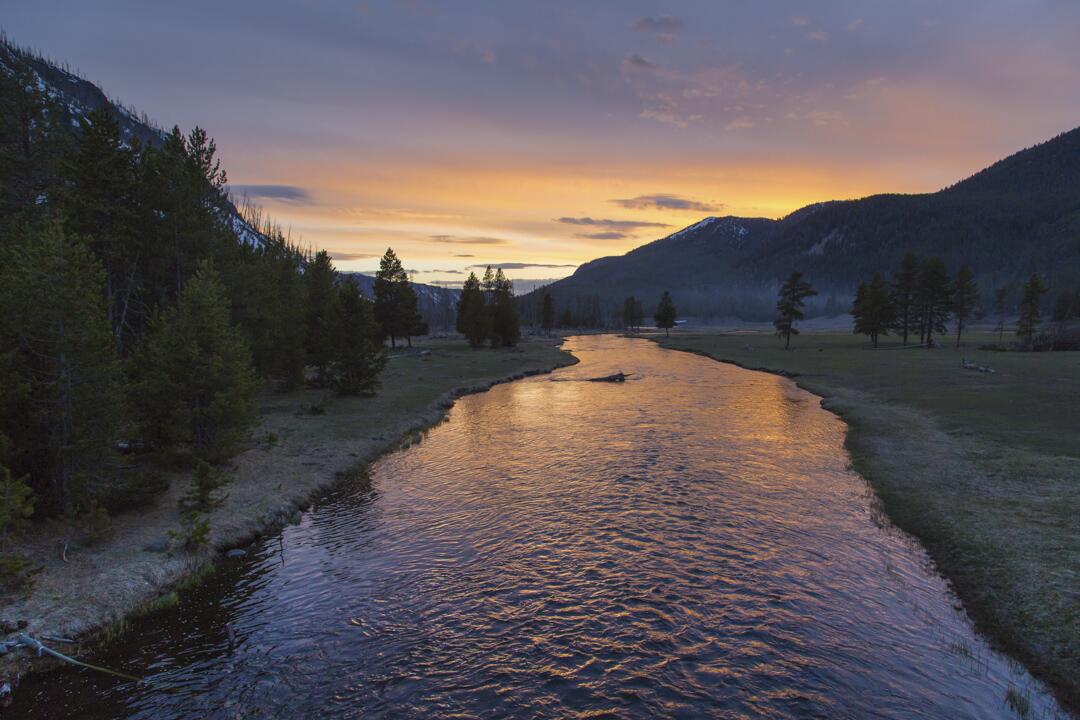Have you been to Google today for a general search? Did you catch the Doodle?

Google Doodle for May 27, 2014, honors scientist and writer Rachel Carson on what would have been her 107th birthday.
Perhaps even more remarkable, if you click the Doodle (any Doodle) it takes you to a Google search on that subject. The search you get today is all positive about Carson. Considering the money being spent to soil her reputation, 50 years after her death, one might wonder if Google adjusted the search or the algorithm for the results to do that.
If they monkeyed with it, give them bonus points for accuracy and thoroughness.
If they didn’t monkey with it, take great hope that Ben Franklin was right, and truth does indeed win in a fair fight.
Here’s page 1 of the search result I got (not an image, so the links stay hot for you):
en.wikipedia.org/wiki/Rachel_Carson
Rachel Louise Carson (May 27, 1907 – April 14, 1964) was an American marine biologist and conservationist whose book Silent Spring and other writings are …
-
-
Tomorrow marks the 107th anniversary of the birth of Rachel Louise Carson, the environmentalist whose research led to the banning of harmful …
-
Express.co.uk – 12 minutes ago
-
Times of India – 3 hours ago
-
2 hours ago – Rachel Louise Carson: Google Doodle commemorates environmentalist author whose ‘Silent Spring’ led to pesticides ban …
-
www.rachelcarson.org/
Life of Rachel Carson, founder of contemporary environmental movement, author of Silent Spring, advocate of nature and environmental ethics, against the …
-
13 hours ago – Uploaded by Setya Budianto
Rachel Louise Carson’s 107th Birthday Rachel Carson – Wikipedia, the free encyclopedia. Rachel Louise …
-
12 hours ago – Uploaded by On The Spot Trans 7
Rachel Louise Carson’s 107th Birthday Google Doodle 2014 Rachel Louise Carson Google Doodle …
-
Doodles Archive · About · Store · Doodle 4 Google. Rachel Louise Carson’s 107th Birthday. More Doodles. May 27, 2014. Rachel Louise Carson’s 107th …
-
2 hours ago – New Delhi: Google dedicates the doodle for the day to Rachel Louise Carson, an American marine biologist and conservationist. Her book …
-
6 hours ago – TODAY’S Google Doodle celebrates the 107th birthday of Rachel Louise Carson, an American marine biologist and conservationist.
-
au.ibtimes.com/…/google-doodle-rachel–louise–carson-green-movement….
7 hours ago – In celebration of the life and legacy of the 107th birthday of the Mother of Green Movement Rachel Louise Carson, Google treats visitors to the …
Rachel Carson left a great and powerful legacy. 52 years after the publication of her most important, most read, and most criticized book, not a single piece of science she cited has been disproven by subsequent research. Discover Magazine did a literature search some years ago and found more than 1,000 research projects had been done on DDT’s harm to birds, and every one that was published came back to support the claims Carson had made.
Apart from her extreme care for the science and great accuracy, Carson’s words today can still inspire. She was a helluva writer. Carson made clear that biological research in the wild is really ecology. Today more than ever before range botanists and zoologists, to take one example, work closely with each other, and with geneticists, molecular biologists, entomologists, chemists, physicists, climatologists, geologists and geographers, and anyone else who wants to chime in, to present clear understandings the ripple effects damage or benefit to one species may have on many others.
Before Rachel Carson, any graduate study programs in ecology were few and far between, often not even called ecology.
Those methods help to save birds, and also every other form of life on the planet.
Blinded, angry and malicious opposition to the facts Carson laid out, and later scientists still lay out, remains the bigger problem.
Chemical manufacturers spent more than $500,000 in 1962 to smear Carson and her work. The smears largely did not work, instead forcing scientists to look at her work (which they found solid in science). But since then, tobacco companies with the Tobacco Institute, perfected the techniques of raising doubts about good science among policymakers and the public. Today companies spend billions to impugn scientific works in climate change, air and water pollution, and health care. They are joined by an unpaid mob of internet-savvy malcontents to impugn the integrity of the U.S. space program, vaccinations, and even meteorologists who note that airplane exhaust creates condensation trails at high altitudes. (Yes, it’s water vapor.)
This blog’s seeming obsession with Carson was prompted by such an exquisite act of denialism in Congress, seven years ago, when I learned that Utah Congressman Rob Bishop was bragging about blocking the naming of a post office for Carson, based on false claims that Carson had written false or faulty science, that the U.S. ban on DDT use on crops had extended far outside the jurisdiction of the U.S., and that a shortage of DDT meant malaria had come roaring back from near extinction to unnecessarily kill millions. (The post office was eventually named for Carson, but Bishop and other deluded critics have never repented nor apologized.)
(The facts: Malaria deaths and infection rates both continued to drop, worldwide, after the U.S. stopped spraying DDT on cotton. Many tens of millions fewer people died of malaria after the U.S. banned it. The U.S. ban covered only the U.S., but let DDT makers keep cranking the stuff out for export, multiplying the amount of DDT available to fight malaria. Unfortunately, as Carson feared, abuse of DDT in the third world quickly created DDT-resistant and immune mosquitoes; in 1965, the World Health Organization abandoned its malaria eradication campaign because of DDT’s declining effectiveness, a full seven years before the U.S. banned DDT.)
Truth wins in a fair fight, Ben; but as in colonial America, it is necessary for brave citizens to work hard to keep the fight fair.
Because of Rachel Carson, the bald eagle is off the endangered species list, and proliferating in the lower 48 states of the U.S. — as indeed are the peregrine falcon, osprey, and brown pelicans. DDT continues to hammer many creatures in the wild, however, including the still-endangered California condor. Our national policies now require, by law, that significant federal projects consider the environmental effects of those actions, and mitigate the more severe effects or not proceed. The U.S. now has an agency whose sole job is to consider the safety of chemicals and substances we use in the wild, with power to regulate air and water cleanups — and to clean up more than 400 DDT-contaminated sites on the EPA Priority List, or Superfund. Among the great successes of this agency was the elimination of lead from gasoline in the U.S., reducing chronic lead poisoning in tens of millions of Americans, and literally raising the national average IQ with elimination of the brain-killing effects of lead. Lake Erie is cleaner. The Potomac River, though with its problems, is once again clean enough for humans to swim and boat, as are a hundred other waterways in America, from the Raritan River in New Jersey to the Willamette in Oregon.
Very powerful legacy indeed.
Happy birthday, Rachel Carson; Earth is lucky to have had you, even for such a brief period.
More:
- We’ve been dogging the critics of Rachel Carson and the advocates of Poisoning Africa Beyond Belief for several years now. If there is a criticism against Carson, especially one that suggests she or her supporters are murderers, it’s probably dealt with here, in one of more than 200 posts. Try the search bar, or go to this list of most of the posts, which list should appear at the top of almost all pages here.
- Other great sources of information include Bug Girl’s blog, Deltoid by Tim Lambert (see his post on the false claims that only DDT saved South Africa, for example), and John Quiggin in various fora, including his book, Zombie Economics.
Spread the word; friends don't allow friends to repeat history.






 Posted by Ed Darrell
Posted by Ed Darrell 

























